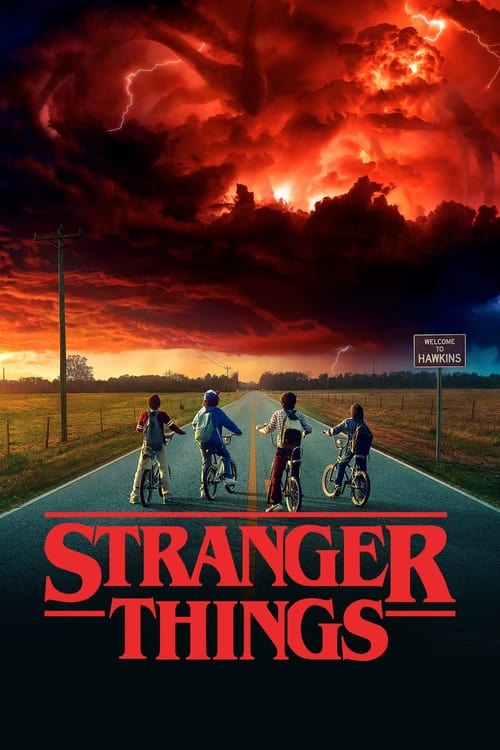
Ask Your Own Question
What is the plot?
The series "Gone Girls: The Long Island Serial Killer" begins on May 1, 2010, with a frantic 911 call from Shannan Gilbert, a sex worker, who reports that someone is chasing her and trying to kill her. When police arrive at the scene, Shannan has mysteriously disappeared, sparking a massive search effort.
The search for Shannan continues for months, during which time the investigation uncovers multiple bodies of missing women along Long Island's Gilgo Beach. These women, many of whom were involved in sex work, are believed to be victims of a serial killer. In December 2010, a police officer and his K-9 discover Shannan's remains near Gilgo Beach, confirming her death and deepening the mystery surrounding the other victims.
As the investigation unfolds, the focus shifts to the possibility of a serial killer responsible for the deaths. However, the local authorities initially deny this theory and resist FBI involvement. The investigation is further complicated by allegations of police corruption, including rumors that Police Chief James Burke was meeting with sex workers, which casts doubt on the integrity of the investigation.
The series details the long and frustrating search for justice by the victims' families, who face institutional obstacles and a botched investigation. DNA evidence eventually surfaces under new leadership in the case, leading to the identification of a suspect, Rex Heuermann. Despite his large physical presence and suspicious behavior noted by neighbors, he had evaded suspicion for years.
Throughout the series, the narrative centers on the victims and their loved ones, highlighting their struggles and the stigma faced by sex workers. The documentary also explores the emotional toll on families and the community's demand for accountability and justice.
The final episodes reveal the ongoing nature of the case, with the suspect still under investigation and the full truth yet to be uncovered. The series ends without a definitive resolution, emphasizing that the search for justice continues even 15 years after the initial 911 call.
More TV Shows Like This
Browse All TV Shows →What is the ending?
The ending of Gone Girls: The Long Island Serial Killer reveals the arrest and identification of Rex Heuermann as the prime suspect in the Gilgo Beach serial killings. The documentary concludes with the acknowledgment that after years of investigation and missed opportunities, new DNA evidence finally led to his capture. However, the series leaves the killer's current whereabouts and the full extent of justice still somewhat open-ended, highlighting ongoing struggles for closure among the victims' families.
In a detailed chronological narrative of the ending:
The documentary opens its final sequence reflecting on how the Gilgo Four were discovered by police, setting the stage for understanding the scale of the tragedy. It then revisits the disappearance and death of Shannan Gilbert, whose case intensified scrutiny on the investigation.
The investigation is portrayed as fraught with corruption and inefficiency, with critical leads ignored or mishandled over many years. Eyewitness accounts identifying a suspect were overlooked until nearly a decade later, illustrating profound investigative failures. The documentary shows how the police knew key details about the killer's living location and possible workplace, yet failed to act decisively.
Then, a pivotal moment arrives when new officials take over the case and employ fresh DNA analysis. This breakthrough unearths the evidence required to arrest Rex Heuermann, described as a large man living in the suburbs who had unnerved neighbors for decades. The film stresses how bizarre it is that such an obvious suspect was missed for so long despite extensive circumstantial evidence.
The documentary also addresses the emotional toll on victims' families, particularly noting the harrowing experience of one victim's sister who was taunted by the suspect over the phone. The series ends emphasizing the victims' fight for justice, the incomplete nature of the resolution, and the hope that the guilty will ultimately be held accountable.
The closing scenes do not gloss over the complexity of the case or the pain of those involved but rather present the facts and the slow march toward justice in a matter-of-fact manner, underscoring the persistence necessary in uncovering and prosecuting such crimes.
Is there a post-credit scene?
There is no specific information available about a post-credit scene in the 2025 documentary series "Gone Girls: The Long Island Serial Killer." The series focuses on the Gilgo Beach serial killings and is told from the perspective of the victims and their loved ones. It explores the long search for missing women and a suspect, highlighting the flaws in the original investigation and the fight for justice. If a post-credit scene exists, it would likely provide additional context or insights into the case, but without specific details, it's unclear what such a scene might entail.
What new investigative techniques or evidence led to the arrest of the suspected Long Island Serial Killer in the docuseries Gone Girls?
Gone Girls reveals that the new team of Suffolk County Police Commissioner Rodney Harrison and District Attorney Ray Tierney used advanced technology, police reports, and witness descriptions to identify a suspect. They were able to achieve in six weeks what previous investigators could not in 12 years, leading to the arrest of Rex Heuermann in 2023 based on DNA evidence and other circumstantial factors.
How does Gone Girls portray the victims and their similarities in the Long Island Serial Killer case?
The docuseries expands on the victims' stories by examining the similarities between them, many of whom were sex workers, and recounts new details about the investigation. It includes interviews with friends and family members of the victims, highlighting their lives and the impact of the crimes.
What role do the families of the victims play in the narrative of Gone Girls?
Gone Girls features the families and friends of the victims prominently, showing their search for answers and justice. The series includes their perspectives and emotional journeys, emphasizing their campaign for recognition and accountability in the case.
How does Gone Girls differ from the related film Lost Girls in its storytelling approach?
While Lost Girls focuses on the 2010 disappearance of Shannan Gilbert and the initial investigation, Gone Girls is a three-part docuseries that covers a broader timeline of killings over 28 years. Gone Girls provides a more detailed examination of the investigation, new evidence, and the eventual arrest, whereas Lost Girls is a narrative film inspired by the case.
What insights does Gone Girls provide about the suspected killer's personal life and how it relates to the crimes?
The series touches on the double life of Rex Heuermann, the suspected killer, including exclusive family testimony revealing dark secrets beneath the surface of his suburban home. It explores how he maintained a facade of normalcy while allegedly committing the murders, with some family members seemingly unaware or in denial of his actions.
Is this family friendly?
The TV show Gone Girls: The Long Island Serial Killer (2025) is rated TV-MA, indicating it is intended for mature audiences and is not family-friendly for children or sensitive viewers.
Potentially objectionable or upsetting content includes:
- Mild sexual content and nudity, such as scenes featuring women dancing in a strip club wearing revealing clothing in episode 3, which might be inappropriate for children.
- Moderate violence and gore, consistent with the crime documentary nature of the show dealing with serial killings. This level of violence could be disturbing for sensitive viewers or younger audiences.
- Moderate profanity throughout the series.
- Mild frightening and intense scenes, which could be unsettling especially given the serious subject matter of disappearances and murder.
- Mild use of alcohol, drugs, and smoking.
Overall, the show deals with dark, real-life criminal themes and includes mature content that makes it unsuitable for children or viewers sensitive to violence, sexual content, or intense material. Viewer discretion is advised.
Does the dog die?
In the TV show Gone Girls: The Long Island Serial Killer (2025), which is a documentary exploring the Gilgo Beach serial killings, there is no mention or indication that a dog dies in the series. The documentary centers on the victims, their loved ones, and the investigation of the serial killings, without focusing on any storyline involving a dog or its death.
The search results that discuss whether a dog dies generally refer to other shows or movies and do not connect to Gone Girls: The Long Island Serial Killer specifically. Therefore, based on available information, there is no dog death depicted or mentioned in this documentary series.





















